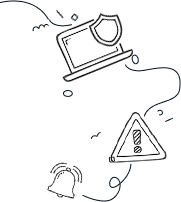Mythbusting AI: Why Your Toaster Isn’t Plotting to Steal Your Job
Let’s clear up a few of the most common myths about AI in the workplace!
The post 3 Common Myths About AI appeared first on Cybersafe .

Introduction
Have you heard of your RAM? Do you know what it means?
No, not the sheep-like animal with horns…
RAM stands for Random Access Memory. It’s essentially your computer’s short-term memory. Think of it as the workspace where your computer stores data it needs to access quickly.
It sounds like a complex technological term, but really, RAM factors into the productivity and cybersecurity of our computers! It determines how much memory and storage we can use, the speed of our system and applications, and the overall productivity of our devices.
How RAM Stores Memory
Here’s a breakdown of how your random access memory works.
Unlike your hard drive or SSD, which store data permanently, RAM only holds information while your computer is turned on. This temporary storage which deletes as soon as your computer turns off. That protects your short-term data from exploitation—but it isn’t entirely unrecoverable. In fact, there’s a brief window of opportunity after power loss where data can still be recovered. When malicious actors exploit this window of opportunity to access sensitive information stored in RAM, it is known as a “cold boot attack.”
This kind of attack requires physical access to the device, however, so imposing physical safeguards — like padlocks, security guards, door codes and biometric identification for entry — can keep your systems safe.
That window of opportunity for short-term storage recovery can be helpful for you, too! We’ve all been there: 80% into an important project and a power outage, program crash or system glitch deletes all of our hard work…and of course you haven’t saved your progress for hours.
Thanks to the RAM recovery window, all of your hard work can usually be recovered if you move quickly.
How RAM Affects Your Speed
Random access memory is much faster than traditional storage devices, thus allowing your computer to access data almost instantly. The amount of RAM in your computer determines how much data it can hold in its short-term memory at once—every device is different when it comes to storage, but you can check how much you have by going to Settings > System > Storage or in your Task Manager by checking Performance > Memory.
More RAM generally means better performance. Why is that important?
In essence, RAM is crucial for your computer’s performance and ability to handle tasks efficiently…and it also has significant implications for cybersecurity!
Protecting Your RAM
While RAM might seem like an unlikely target, you need to remember that there is no limit to what cybercriminals will attack. If it stores your data, then hackers want in.
Here are some key measures to protect your RAM:
It’s essential to maintain a layered approach to cybersecurity, combining multiple protection measures, to best protect the security of your systems and data!
Conclusion
RAM can be a target for various attacks, including buffer overflows and memory corruption. Remember, sensitive information like passwords or encryption keys might reside in RAM temporarily. Malicious software can potentially capture this data before it’s erased.
While these threats might seem complex, it’s essential to understand that they exist. Cybersecurity measures, including strong encryption, regular software updates, and robust antivirus protection, help mitigate these risks. It’s a critical component in your cybersecurity landscape!
Let’s clear up a few of the most common myths about AI in the workplace!
The post 3 Common Myths About AI appeared first on Cybersafe .
A PHI breach on Blue Shield has millions of patients wondering about the security of their healthcare data. What does it mean for healthcare patients moving forward?
The post Inside the PHI Breach at Blue Shield appeared first on Cybersafe .
Why are there blocked websites on your work WiFi?
Dive into how restricting certain sites can help maintain a more secure and productive work environment.
The post Why Are There Blocked Websites on Work WiFi? appeared first on Cybersafe .


Contact Us
Send a Message
